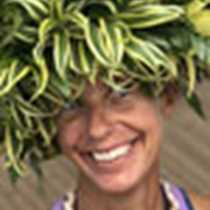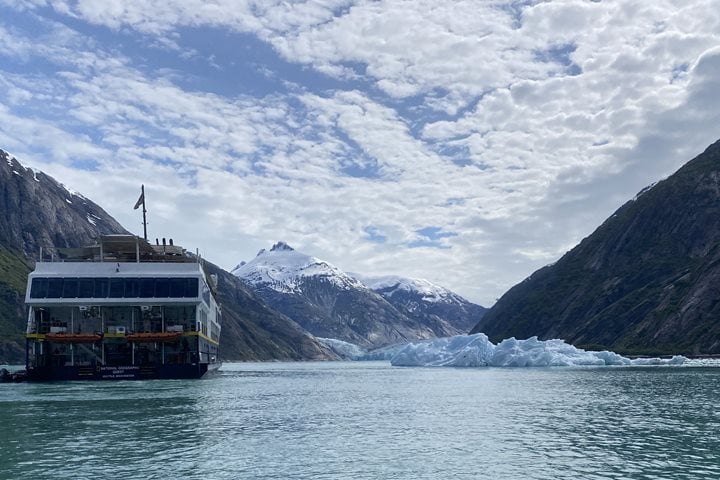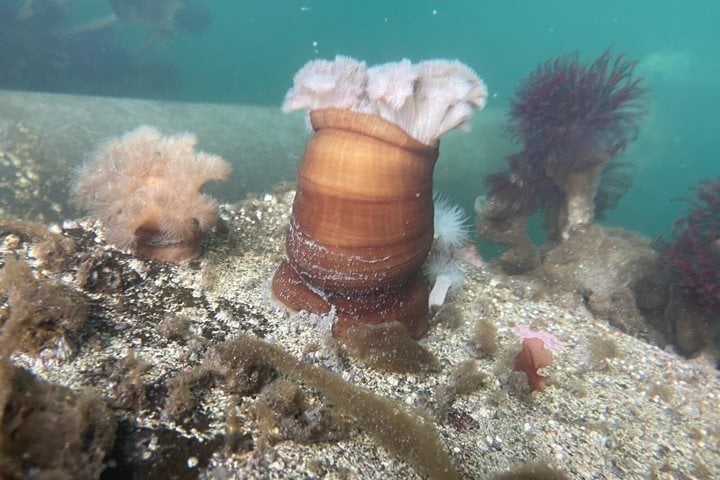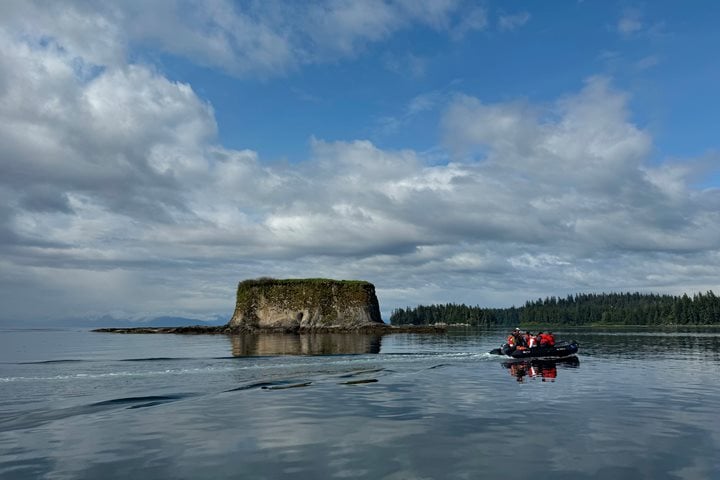This morning those aboard National Geographic Sea Bird awoke in one of the world’s longest fjords, Chatham Strait. The 6:20 a.m. wakeup call was a bit of a drizzle but the pec slapping humpback was well worth the wake. After breakfast we dropped the hook in Hanus Bay and explored the incredible forest of northeast Baranof Island and Lake Eva. Signs of brown bear scat were a good reminder of whose home we were visiting. Above the falls we could only imagine what this drainage might look like in the weeks to come as one of only two sockeye runs in the East Baranof province will come to spawn and die.
The huge trees along the trail were evidence of this incredibly rich salmon habitat. Bears will consume 30+ salmon a day in the height of the spawn. Tree core samples have shown that up to 80% of the nitrogen in trees along salmon streams is derived from the ocean, coming from the excrement of bears and the salmon carcasses they drag into the woods. Needless to say these trees are some of the largest we see in Southeast Alaska.
Leading up to the lake signs of North America’s largest rodent were evident. We saw partially chewed beaver trees along the lake and cambium consumed, but swells were evidence of recent activity. A common loon (and nest) were also spotted on the lake followed by a loon chasing a beaver…what a sighting! After a group hug around the largest tree on the trail we continued along in awe of the temperate rain forest.
Cruising further down Chatham Strait in the afternoon we tucked into Warm Springs Bay for dinner and learned about the biology of humpback whales and some of the experiences of the interns volunteering for the Alaska Whale Foundation. But another magical day here in the Alexander Archipelago!






